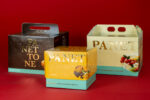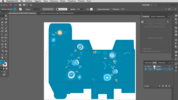Everyone is flawed. Actually, in the imperfection lies the true beauty and the uniqueness of each of us.
In a previous article about minimal packaging we described how this style tends to constantly chase the state of being linear, the reduction of material and stylistic perfection. On one hand, that features may help consumers easily choose thanks to the essentiality of information; on the other hand, instead, they may stop the possible emotional relationship a user could build with.
Today we will focus on the human and interpersonal aspect of “imperfect packagings”.
Imperfect packagings
By “imperfect packagings” we mean those flawed boxes, born with the desire to add value to imperfection and, so, to authenticity behind a product and, more generally, inside everyone and every aspect of daily life. Flaws that turn into strengths of the project.
What’s behind? The desire to create a sudden emotional connection between observer and product by realizing ourselves in those flawed features. That way, packaging will assume its own personality and more human, familiar and pleasing features. It get close to consumers referring directly to them, appearing more real and catching them.
Wabi-sabi
The principle of flawed beauty is behind wabi-sabi, aesthetic Japanese concept that enhances the beauty of imperfect, humble and transitory things, able to mirror the irreversible flow of life. Real beauty that doesn’t hide the signs of the time but, on the contrary, uses them to express itself at its best.
This type of beauty has been, and still is, a source of inspiration to designers and creatives all over the world. In addition, it is widely used in marketing strategies of different brands.
Higgidy’s packagings are a great example: custom boxes decorated with typical prints of pottery dishes realised by hand and then usually flawed and unique. A project coming from a rebranding campaign aimed to give added value to the product and the consumer at once.

The flip side of the coin
Creating products and imperfect packagings may cause one of the highest risks on the market: the negative perception of product by the consumer. The direct consequence? A sales slump.
Superficial imperfections, simulating some kind of damages, when not accurately realised and showed, may let you think of a real faulty product. And who would buy an item already damaged? No one, very likely. That way the brand image may be damaged both economically and aesthetically.
How to?
In order to avoid this kind of pitfall we need to thoroughly study the project, by highlighting mistakes and imperfections and their attention to detail, making clear that there is the mistake, it’s right, but it’s done on purpose.
Here following are some imperfect packagings that will catch you!













